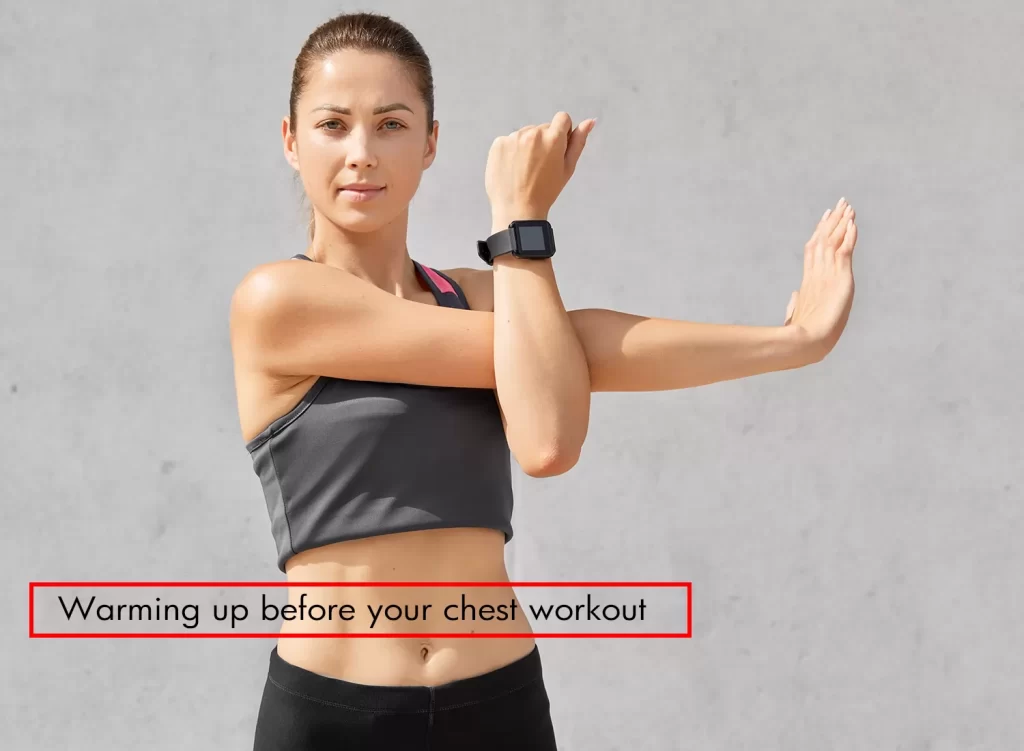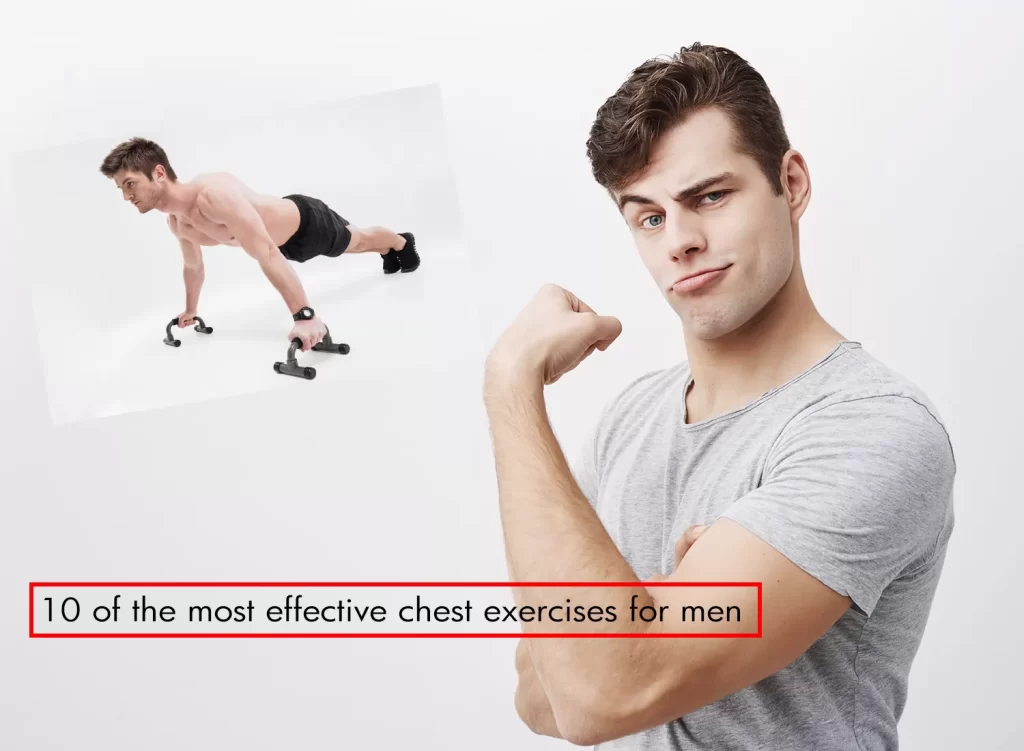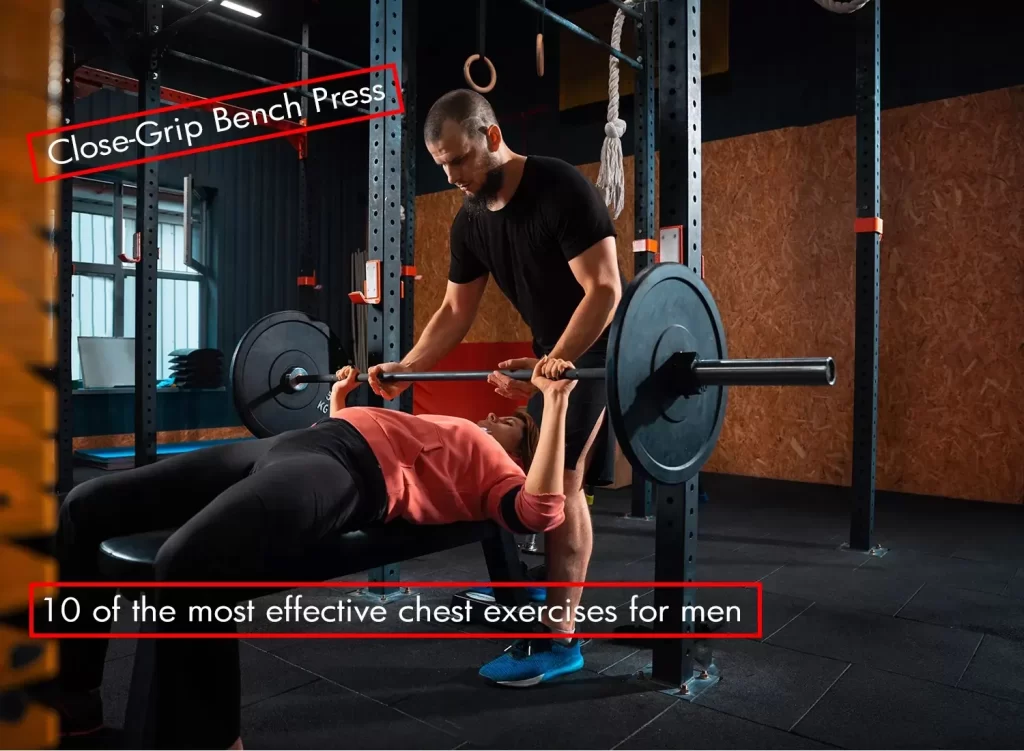Table of Contents
What muscles do you have in your chest?
Have you ever wondered why everyone at the gym refers to their chest muscles as “pecs” when they have biceps? Some of them are doing it because they took up the word from their brothers, while others are doing it because they are aware that the chest is made up of pectoral muscles, as opposed to other muscles.
In the first place, there is the pectoralis major, a thick and broad muscle that extends from beneath the breast and fans out across the chest area. At least six distinct sets of muscle fibers are found in this region, which gets dual motor innervation from both the medial and lateral pectoral nerves, respectively. The pectoralis major muscle, which pulls on the humerus, allows for lateral, vertical, and rotational movement.
There is a tiny and triangular muscle known as the pectoralis minor that is located underneath the pectoralis major (naturally). As the smaller of the two muscles, it is derived from three points on the ribcage and is responsible for assisting the scapula in movement. These two muscles, together known as the pectoralis major and minor, make up your pectoral muscles (sometimes known as your “pecs”), which are important in both arm mobility and deep inhalation.
Warming up before your chest workout
The warm-up consists of doing each exercise in one set with the suggested rep count for the given exercise. Once you have finished one exercise, move on to the next one right away.
-
Up and overs | Reps: 10
Procedure: Standing sideways to your bench, with the bench positioned to your right, you will take a step forward with your right leg and put it on the bench to get started. After that, you will take a few steps forward and place your left leg on the bench. Then, after both of your feet are planted firmly on the bench, take a step down to the right, beginning with your right leg and then moving on to your left. It is important that you are now positioned such that the bench is on your left. After that, you will go through the procedure again. Start by stepping up with your left leg and putting it on the bench, then step up with your right leg and repeat the process with your left. Once both of your feet are on the bench, you will take a step down to the left, beginning with your left leg and then moving on to your right foot. This is one repetition. Continually repeat this exercise until you have finished 10 repetitions on each side.
You might also like Home Workouts to Build Muscle Mass
-
Halos Right & Left | Reps: 5 each side
Procedure: A medicine ball, weight plate, dumbbell, or kettlebell may be used to do halo exercises. Choose a lightweight rather than a hefty one, since this is intended to loosen up the muscles rather than strain them. Procedure: To begin, maintain a straight posture and keep your shoulders relaxed throughout the exercise. Keep your weight of choice in front of you at all times. Take a small lift of the weight over your shoulders and in front of your face. Take the weight in your hands and begin moving it to the left, forming a leisurely circle around your head the whole time. The weight should be kept near to your head during the circle, but you should move gently so that you do not knock your head throughout the movement. Once the weight has completed a full circuit around your head, repeat the action in the other direction.
-
Internal Rotations | Reps: 10 each side
Procedure: This exercise will be done with either a light dumbbell or an exercise band, depending on your preference. Use of an exercise band is only permitted if the band is securely attached to a stationary item that will not move when strain is applied to the Use of an exercise band is only permitted if the band is securely attached to a stationary item that will not move when strain is applied to the Tuck your right elbow into the side of your body. Hold the dumbbell or exercise band in front of you at waist height with your right hand, then repeat with your left hand. Tuck your right elbow into your side and twist your arm at a slow, controlled pace so that your right hand is now in front of your midsection. You should be able to gently rotate the weight back to its initial position after you have reached this position. This is one repetition. Repeat the process with both arms.
-
External Rotations | Reps: 10
Procedure: This exercise is very similar to the internal rotations, except that instead of rotating your arm such that it finishes up in front of your torso, we will be spinning it away from your body. Instructions: This will be done with either a light dumbbell or an exercise band, depending on your preference. Use of an exercise band is only permitted if the band is securely attached to a stationary item that will not move when strain is applied to the band. Tuck your right elbow into the side of your body. Hold a dumbbell or a weight band in front of you at waist height with your right hand, then repeat with your left. Make sure that your right elbow is tucked into your side, then slowly and carefully twist your arm such that your right hand and forearm are perpendicular to your body. You should be able to gently rotate the weight back to its initial position after you have reached this position. This is one repetition. Repeat the process with both arms.
-
Overhead Slams | Reps: 10
Procedure: A medicine ball is all you will need for this workout, which is simple to do. Begin by putting your feet about shoulder-width apart and taking a deep breath. Grab your medicine ball with both hands and raise it over your head. (See illustration.) Slam the medicine ball to the ground in front of you as hard as you possibly can while keeping a small bend in your knees. Maintain proper posture over the region where you slam the ball and be cautious that the ball does not bounce back and strike you. After catching the ball on the bounce, repeat the action, beginning with the ball over your head this time.
-
Chest Slams | Reps: 10
Procedure: A medicine ball is all you will need for this workout, and that is it. Standing with your feet shoulder-width apart and a small bend in your knees is a good place to start. Pulling the medicine ball up to your chest with your fingers pointed away from your body should be done with both hands on each side of the medical ball. Adjust your posture by bending at the waist so that your upper body is practically parallel to the ground. Using your arms, push the ball away from your body to the ground, as if you were attempting a chest pass in basketball. Once the ball has bounced back, catch it and repeat the process. Take care not to allow the ball to ricochet back and strike you in the face. Decide on a pace that is comfortable for you to move at.
-
Barbell Pushup | Reps: 10
Procedure: Take your barbell and set it on the floor in front of you to execute this exercise. If you have any weight plates weighing between 5 and 10 pounds, put one on each side of the bar. Take a firm hold of the bar with both hands, about shoulder-width apart, to begin. Put yourself in the standard push-up position while still hanging on to the bar, and then complete a standard push-up. It is important to maintain the barbell steady throughout the push phase since it will try to roll away if you don’t. Additionally, keeping the barbell beneath your shoulders provides more core resistance.
-
Lat Stretch | 20 seconds
Procedure: To complete this exercise, you will need either a bench, a chair, or an exercise ball to provide you with support. Begin by going down on your hands and knees and positioning your support object in front of you. Both your right and left arms should be fully extended, and both of your hands should be placed on top of your support object. Ensure that the outsides of your hands are resting on the support object and that your thumbs are pointing up toward the ceiling. As though you were attempting to make contact with the ground with your chest, slowly begin pushing your chest towards the ground and holding it there. Hold for 20 seconds, and then gently raise yourself back up to a standing position.
Following completion of your warm-up, it is time to begin working on your chest day. Lifting weights over your body should always be done with controlled motions, and a spotter should always be requested.
See also Proper HIIT Workouts on a Treadmill
10 of the most effective chest exercises for men
Effective chest exercises for men have a tendency to push your body to its limits, which is why you should be cautious while doing so. Moreover, although you are not barking up the wrong tree, a lot of specialists will point out that you should avoid going to extremes while practicing chest exercises, particularly with dumbbells or barbells. In the end, this is a crucial distinction to make since it might mean the difference between having healthy chest muscles and having a catastrophic injury. In other words, even if you are trying to gain muscle growth, you should use caution and moderation while doing chest exercises. With that in mind, here are some recommendations:
The top ten chest exercises for men are as follows:
-
Cable Cross-Over
At the gym, this is a popular chest exercise for males that may be done from low to high reps or from high to low reps. A cable pulley machine is required for both types. The machine should be set to the lowest possible setting. A D-handle should be attached on both sides, and the handles should be grabbed with the palms of your hands up. It is best if your feet are shoulder-width apart and that your back is straight, the chest is up, and your arms are down and slightly bent on both sides. After that, steadily raise and lower both handles until they are at eye level before returning them to their initial positions. Lighter weights and fewer repetitions should be used instead.
You may travel from high to low by placing the cable pulley machine to the highest setting and grasping each handle with an overhand grip. Maintaining a shoulder-width distance between your feet, stretch each arm out to the side in a T-shape arrangement, with your elbows slightly bowed. Pulling both handles down into your stomach until they touch in front of your hips is the next step to take. Pull in your pecs and tense your core before gently raising the handles to shoulder level. Repeat.
The following muscles were worked: the sternal heads of the pectoralis muscles.
The following equipment is required: a cable crossing machine.
Intermediate to a tough level of difficulty
-
Push-Ups
As surprising as it may seem, push-ups are one of the most effective chest workouts for men, which is great news because you can do them just about anywhere, at any time of day. We will not insult your intellect by attempting to demonstrate how to do a push-up. In general, your hands should be shoulder-width apart and your legs should be hip-width apart, according to us. Additionally, while completing the actual push-up, your elbows should make a perfect 90-degree angle with your shoulders. In conclusion, if anything other than your palms and the tips of your toes are in contact with the floor, you are doing the exercise incorrectly.
Pectorals, deltoids, triceps, abdominals, and serratus anterior are among the muscles that have been worked.
There is no need for additional equipment.
The difficulty level ranges from beginner to advanced.
-
Suspended Push-Up
After all, you have mastered the push-up, but are you ready for the challenge of the hanging push-up? In order to give it a go, you need to require TRX straps, which will suspend your hands and torso in an unstable suspension position. Maintaining a shoulder-width distance between your feet, hold the handles, stretch your arms in front of your chest, and position your body at a 45-90-degree angle to the floor to begin. As you lower yourself toward the floor, tighten your abdominal muscles and halt when your hands are slightly outside your shoulders. Bring yourself back to the present and repeat the process. Throughout the exercise, your elbows and head should stay in a neutral posture.
The following muscles were worked: chest, delts, pecs, shoulders, and triceps.
Equipment required: a pull-up bar and a TRX.
Intermediate to a tough level of difficulty
See also Battle Rope, Jump Rope, and Other Rope Workouts
-
Incline Dumbbell Bench Press
The combination of chest exercises and dumbells is well-known, but did you know that performing bench presses at an incline is said to increase upper pec activation during contraction by as much as 30 percent? Set the incline bench at a 30 to 45-degree inclination, grasp two dumbbells with an overhand grip, and sit as far back as possible to complete the exercise. Lift the dumbbells over your head while keeping your feet level on the ground. Extend your arms. Afterward, drop the dumbbells on each side of your chest to the center of your chest and then slowly raise them up while moving them slightly closer to one another. Repeat.
The chest, shoulders, and triceps are among the muscles that have been exercised.
Dumbells, an inclined bench, and other equipment are required.
Intermediate to a tough level of difficulty
-
Barbell Bench Press
Despite the fact that studies have shown that incline presses are more effective, do not let that deter you from doing the good old-fashioned barbell bench press. The finest chest exercise for bulk is often regarded as the best available. This exercise, which has long been a standard in gyms throughout the globe, is still associated with having strong and healthy chest muscles, provided you do not overdo it (or underdo it, for that matter). When completing this chest workout, keep in mind to always have a spotter on hand to ensure your safety. As an added precaution, avoid arching your back or moving your chest throughout each rep.
Laying back on the bench with your feet flat on the ground and your gaze level with the bar is a good place to start. Keep your arms slightly wider than shoulder-width apart as you grasp the bar with an overhand grip. Following that, completely extend your arms and remove the bar from the rack so that it is floating squarely above your chest (see illustration). Maintain your elbows in as you lower the bar until it reaches the tippy-top of your chest (i.e., your nipples), and then hold for one second. Then, with tremendous force, raise the bar until your arms are back in their beginning positions. Repeat.
The following muscles were worked: chest, triceps, and delts
Equipment required: a barbell and a bench.
The level of difficulty is intermediate.
-
Close-Grip Bench Press
A close-grip bench press, rather than a regular bench press, according to some experts, is healthier for your shoulders since it is more effective. The movements are almost identical, with one major difference: your hands and arms are closer to the center of the bar, albeit they are still just outside of shoulder-width. From there, you lift and lower, hold, raise and lower, and so on. You get the gist of it.
The following muscles were worked: chest, triceps, and delts
Equipment required: a barbell and a bench.
The level of difficulty is intermediate.
See also Kickback Workouts: Understanding the Exercise and Identifying Examples
-
Dip
You know you’re making progress when you can integrate a powerful dip exercise into your chest training regimen. Arrive at the dip machine or parallel bars and position yourself dead center between the two bars when you are finished. Lift yourself off the floor with one hand on each bar, bending forward until your chest is at a small downward angle. Repeat on the other side. Bend your arms and lower yourself while maintaining your lean, then raise yourself back to the beginning position. Your pectoralis major is being worked, but your triceps and shoulder muscles are also being strengthened as a result.
Muscles exercised include those in the chest, shoulders, arms, and back.
The following equipment is required: dip bar
Intermediate to a tough level of difficulty
-
Seated Pec Deck Machine
Listed here is another common chest workout that never fails to provide positive effects. Maintain a 90-degree angle with your elbows on the pec deck machine’s vertical pads, and your forearms on the horizontal pads with your hands on the handles in an overhand hold. Pulling the grips backward until you feel a stretch in your chest while maintaining a 90-degree angle with your elbows is important. Then return to your starting place and repeat the process. When completing this exercise, do not depend on the momentum generated by your hands; instead, the energy should come from your chest and forearms.
Serratus anterior, serratus major, pectoralis major, and pectoralis minor were the muscles that were exercised.
The following equipment is required: pec deck machine
-
Plate Press-Out
Start by taking up a plate that weighs between 10 and 45 pounds to use as a weight for this exercise. Maintaining a hip-width distance between your feet, hold the plate with both hands and place your arms in front of your chest. Squeeze your shoulders in order to bring the plate closer to your chest while keeping your back and arms straight (and your core firm). When you have gotten as near as it will go, stretch it out once more to the maximum. Repeat. After executing 10-15 sets of horizontal plate press-outs, you may switch things up by performing the same exercise in an overhead (i.e. vertical) way for a few more reps.
The following muscles were worked: pectorals, triceps, and anterior deltoid
Plates and other related equipment are required.
-
Resistance Band Pull-Apart
Once again, we come to the venerable resistance band pull-apart, which may be used as a fantastic warm-up or cool-down practice. Holding a resistance band with an overhand grip while keeping your feet level with your shoulders and your arms fully extended is recommended. Afterward, extend your arms wide as you stretch the band, pulling your shoulder blades together in the process. Spread the band out until it touches your chest, and then slowly return it to its original position on your body. Repeat.
The upper back and shoulders are among the muscles that have been exercised.
An exercise band is required for this activity.
the level of difficulty is for beginners






